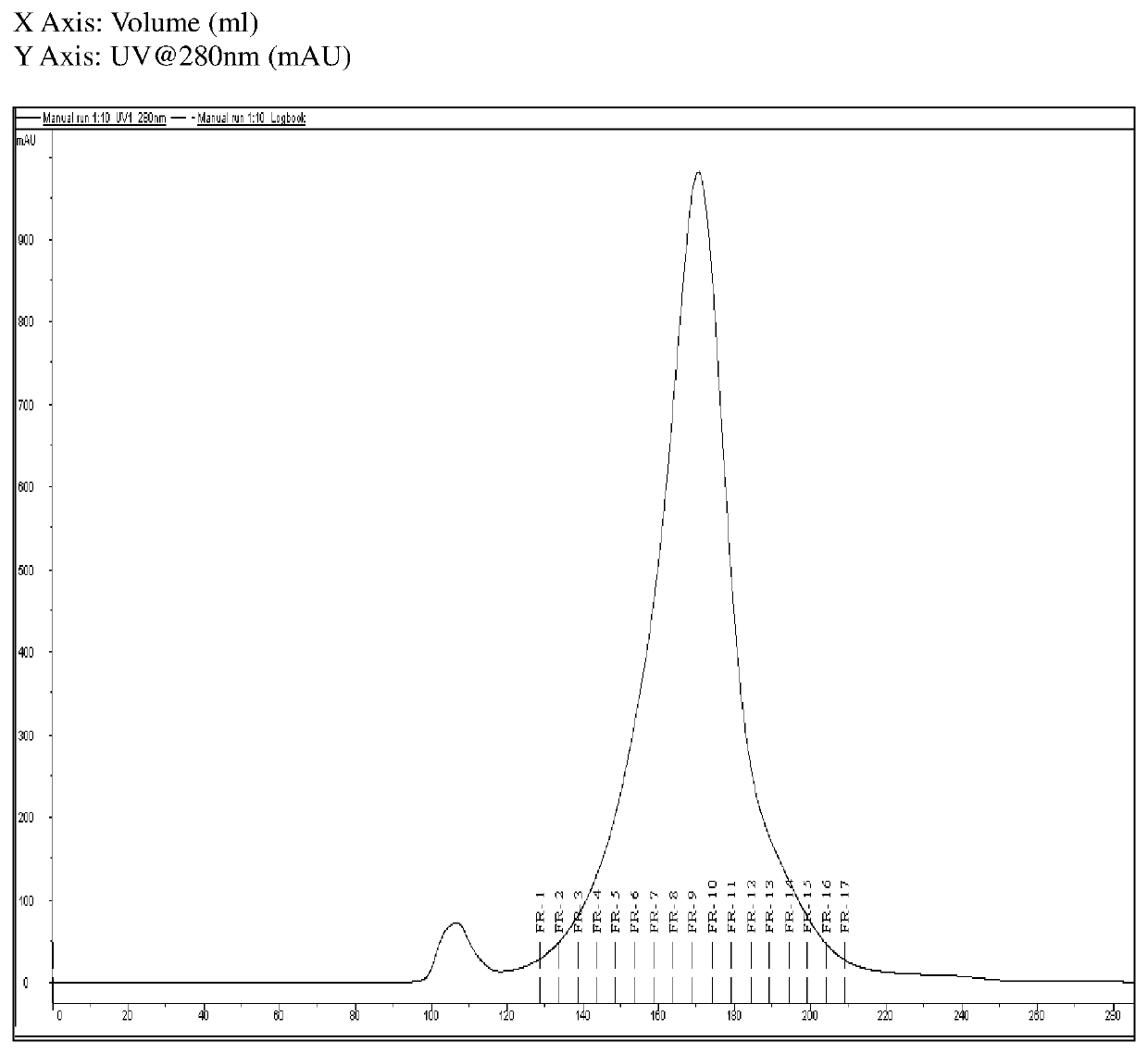Multivalent vaccine composition
a vaccine composition and multi-valent technology, applied in the field of combination vaccines, can solve the problems of re-seeding the world with polioviruses, opv has limitations for the post-eradication era, irreversible paralysis, etc., and achieve the effects of reducing salk, preventing and prophylaxis of infections, and significantly reducing salk
- Summary
- Abstract
- Description
- Claims
- Application Information
AI Technical Summary
Benefits of technology
Problems solved by technology
Method used
Image
Examples
example 1
Preparation of Dose Reduced Inactivated Polio Virus (Salk / Sabin) antigen
Serum Institute of India has developed inactivation and adsorption of Inactivated polio virus as per following protocol:
[0124]CCL81-VERO (Monkey kidney) cell were used as host cells for the growing of polio viruses i.e. sabin and salk strains.[0125]Purification of IPV[0126]Clarified harvest pool was concentrated to 10× using tangential flow filtration system with 100 KDa cassettes (0.5 m2) and then diafiltered 3 times of harvest volume with phosphate buffer (40 mM , pH : 7.0)[0127]The concentrate was purified by Ion Exchange Chromatography (IEC). 10× TFF concentrate was passed through DEAE Sepharose fast flow (Weak-Anion exchanger) packed in column xk-26 using Akta explorer (GE Healthcare). Negatively charged impurities were bound to the column whereas polio virus was collected in flow through with phosphate buffer 40 mM.[0128]To minimize the loss of antigen in a quite cumbersome inactivation procedure (13 days)...
example 2
Preparation of Injectable heat Inactivated Rotavirus (IRV) antigen
[0133]Rotavirus strain (CDC-9) as disclosed in PCT Patent Application No. PCT / US2010 / 034537 entitled “New Human Rotavirus Strains and Vaccines”, filed May 12, 2010; PCT Patent Application No. PCT / US2008 / 075239 entitled “Thermal Inactivation of Rotavirus”, filed Sep. 4, 2008 was used.
[0134]Centers for Disease Control and Prevention (CDC) has developed a method for rotavirus inactivation. CDC has also developed assay for testing rotavirus specific IgG and neutralizing Antibodies.[0135]Rota virus (CDC-9 strain) was cultured using Vero cells (CCL-81) as host cells and the harvest was clarified using 30+2 μ filter to remove cell debris.[0136]The clarified harvest was treated with Benzonase (5000 units per litre) with incubation at 37° C. for 4 hours with continuous stirring.[0137]Benzonase treated bulk was further 10× concentrate and 4× diafiltered using ‘HBSS (Hanks Balanced Salt Solution) +10% sorbitol’ with 100 KDa cass...
example 3
Purification of Diphtheria toxoid
[0140]Diphtheria toxoid was purified using Gel filtration chromatography with process parameters set as below:
[0141]
TABLE 1Process ParametersSr. No.ParameterDetails1Used Native Bulk D—2Content (Native Bulk11 mg / mlD) by Lowry's assay3LF / ml30004Method of PurificationGel Filtration Chromatography(GFC)5ResinSephacryl S-300 HR6Column UsedXK 26 / 70 cm7Column Packed bed~50 cmheight8Linear Flow rate1-3 ml / min9Sample (D) loading4% of total bed volume10Fraction Collection5 ml each (2 min)11AnalysisLowry's assay, LF estimation, %Monomer
Fractions no 6 to 11 were pooled and analyzed for monomer content. (Refer FIG. 1).
Results & Interpretation:
[0142]Multiple runs were performed using above same parameters. CRM197 bulk concentrate was used as a marker to compare % monomer content. Monomeric CRM197 can be considered purest form of DT. The percent monomer content was found to be in the range of 80-90%.
[0143]
TABLE 2% Recovery & Monomer content of purified DT obtainedPr...
PUM
| Property | Measurement | Unit |
|---|---|---|
| temperature | aaaaa | aaaaa |
| w/w | aaaaa | aaaaa |
| w/w | aaaaa | aaaaa |
Abstract
Description
Claims
Application Information
 Login to View More
Login to View More - R&D
- Intellectual Property
- Life Sciences
- Materials
- Tech Scout
- Unparalleled Data Quality
- Higher Quality Content
- 60% Fewer Hallucinations
Browse by: Latest US Patents, China's latest patents, Technical Efficacy Thesaurus, Application Domain, Technology Topic, Popular Technical Reports.
© 2025 PatSnap. All rights reserved.Legal|Privacy policy|Modern Slavery Act Transparency Statement|Sitemap|About US| Contact US: help@patsnap.com

